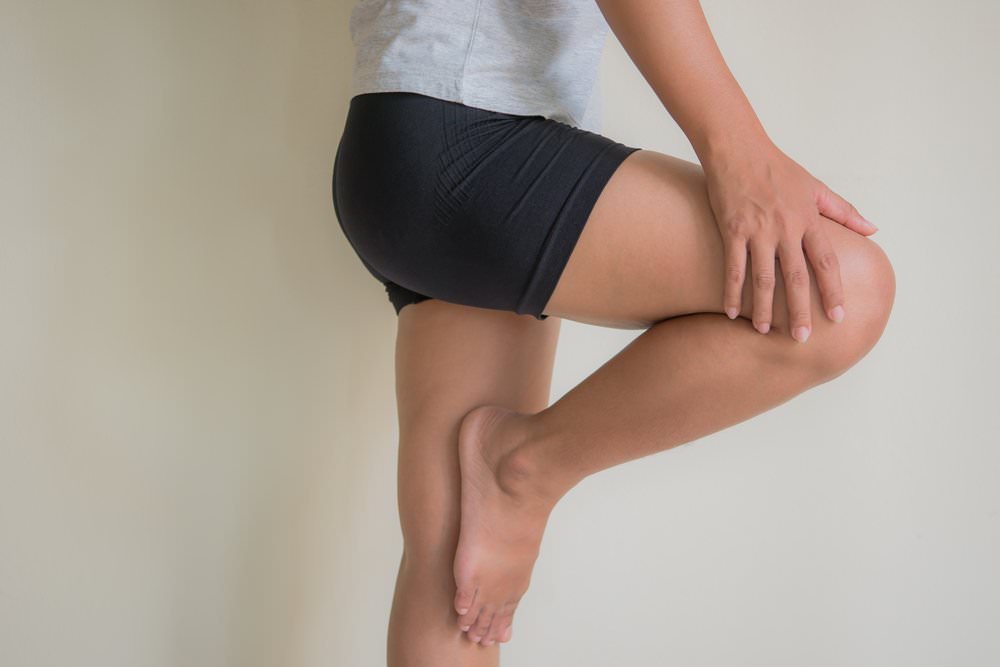Pain in the hips and knees can be debilitating, affecting our everyday activities and overall quality of life. While these joint pains are often seen as separate issues, they are intricately linked, with one often influencing the other. Understanding the relationship between hip and knee pain is crucial in seeking effective treatment and finding lasting relief.
At Orthopedic Specialists of SW Florida, our team of expert orthopedic specialists are dedicated to providing patients with the highest level of care for musculoskeletal needs as well as educating about treatment options and prevention techniques.
Here is how hip and knee pain are related.
How Are They Connected?
The hip and knee joints are intricately connected through a complex network of bones, ligaments, muscles, and tendons. These joints work together to support our body’s weight, facilitate movement, and maintain balance. The hip joint is a ball-and-socket joint that connects the thigh bone (femur) to the pelvis, allowing for a wide range of motion. The knee joint, on the other hand, is a hinge joint formed by the connection of the thigh bone to the shinbone (tibia).
While these joints have different structures and functions, they share a common purpose: to enable smooth and coordinated movement. Any dysfunction or imbalance in one joint can have a significant impact on the other. For instance, problems in the hip joint, such as arthritis, bursitis, or muscular imbalances, can alter the mechanics of the entire lower limb, causing increased stress on the knee joint. This increased stress can lead to conditions like patellofemoral pain syndrome or iliotibial band syndrome, where pain and inflammation manifest around the knee.
Similarly, issues in the knee joint, such as cartilage damage or ligament tears, can cause compensatory changes in the way we move, leading to hip pain or discomfort. Therefore, understanding the interdependence between the hip and knee joints is crucial in diagnosing and treating musculoskeletal conditions effectively.
Overuse
Overuse of the hip and knee joints can significantly contribute to the development of pain and discomfort in these areas. Our bodies are designed to handle a certain level of physical activity and stress, but excessive or repetitive movements can place strain on these joints, leading to various issues. When we engage in activities that involve repetitive motions, such as running, jumping, or participating in high-impact sports, the hip and knee joints are subjected to constant stress and pressure.
This can lead to inflammation, wear and tear of the joint structures, and the breakdown of cartilage. As a result, conditions such as tendinitis, bursitis, stress fractures, and osteoarthritis may develop, causing pain, swelling, limited range of motion, and stiffness. Additionally, poor biomechanics and improper form during physical activities can further exacerbate the problem. Overuse injuries often occur gradually over time, with symptoms initially being mild but progressively worsening with continued strain on the joints.
Therefore, it is crucial to listen to our bodies, incorporate rest days into our exercise routines, gradually increase the intensity and duration of physical activities, and use proper techniques and equipment to minimize the risk of overuse-related hip and knee pain.
Osteoarthritis
Osteoarthritis, a degenerative joint disease, can significantly contribute to connected pain in both the hip and the knee. As osteoarthritis progresses, the cartilage that protects the joints gradually wears away, resulting in bone-on-bone contact and inflammation. In the case of hip osteoarthritis, the loss of cartilage within the hip joint can lead to increased friction and stress on the joint surfaces.
Interestingly, the effects of hip osteoarthritis can extend beyond the hip joint itself. Because the hip, knee, and ankle function as a kinetic chain during walking, any alteration or impairment in one joint can affect the others. When hip osteoarthritis affects the normal mechanics of the hip joint, it can lead to compensatory changes in gait and movement patterns. These compensations can place additional strain on the knee joint, leading to secondary knee pain.
Understanding the relationship between osteoarthritis and connected pain in the hip and knee is crucial for effective management and treatment. By addressing the underlying causes of osteoarthritis, such as joint degeneration, inflammation, and altered gait mechanics, healthcare professionals can develop comprehensive treatment plans aimed at reducing pain, improving joint function, and enhancing overall quality of life for individuals affected by this condition.
Tendonitis
Tendonitis can be a significant contributor to hip and knee pain. Tendonitis occurs when the tendons, which are thick cords that connect muscles to bones, become inflamed or irritated due to repetitive activities or overuse. In the context of hip and knee pain, tendonitis can develop in the tendons surrounding these joints, leading to discomfort and limited mobility.
Hip tendonitis often occurs when the muscles in the hip are overused, causing inflammation or irritation of the hip tendons. This can manifest as gradual hip pain, tenderness at the affected area, and difficulty in performing daily activities. As the hip and knee joints are closely connected through various muscles and tendons, hip tendonitis can potentially cause referred pain or altered movement patterns that affect the knee joint as well.
The stress placed on the tendons and muscles in the hip due to tendonitis can lead to imbalances and increased strain on the knee joint, resulting in knee pain and potential injuries. Understanding the connection between tendonitis and its impact on both the hip and knee is crucial in diagnosing and treating these conditions effectively, allowing individuals to find relief and regain optimal joint function.
Treatment Options
When it comes to managing hip and knee pain, there are various treatment options available that can provide relief without resorting to surgery. One common approach is the use of over-the-counter nonsteroidal anti-inflammatory drugs (NSAIDs) such as ibuprofen or naproxen, which can help alleviate pain and reduce inflammation.
Physical therapy is another effective method that focuses on strengthening the muscles around the hip and knee joints, improving mobility, and reducing pain. Injections, such as corticosteroids, can be administered directly into the affected joint to provide targeted relief from inflammation.
Additionally, lifestyle changes such as weight loss and incorporating assistive devices like canes or walkers can help reduce strain on the joints. It’s important to consult with a healthcare professional to determine the most suitable treatment plan based on individual circumstances and the severity of the pain.
If you are struggling with hip and knee pain, contact our team of orthopedic specialists at Orthopedic Specialists of SW Florida for a comprehensive diagnosis and personalized treatment plan. Our team is dedicated to helping you find relief and get back to living an active, pain-free life. Contact our office today or schedule an appointment directly from our website today!


